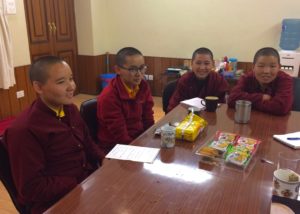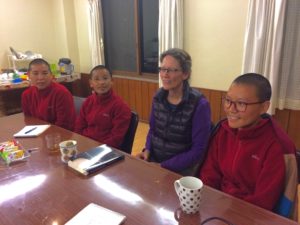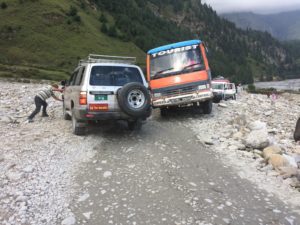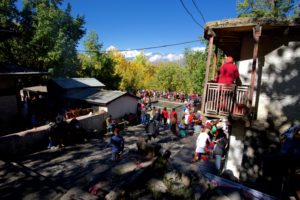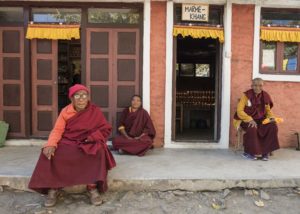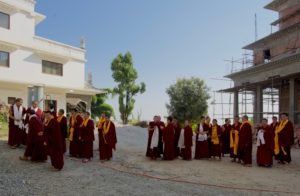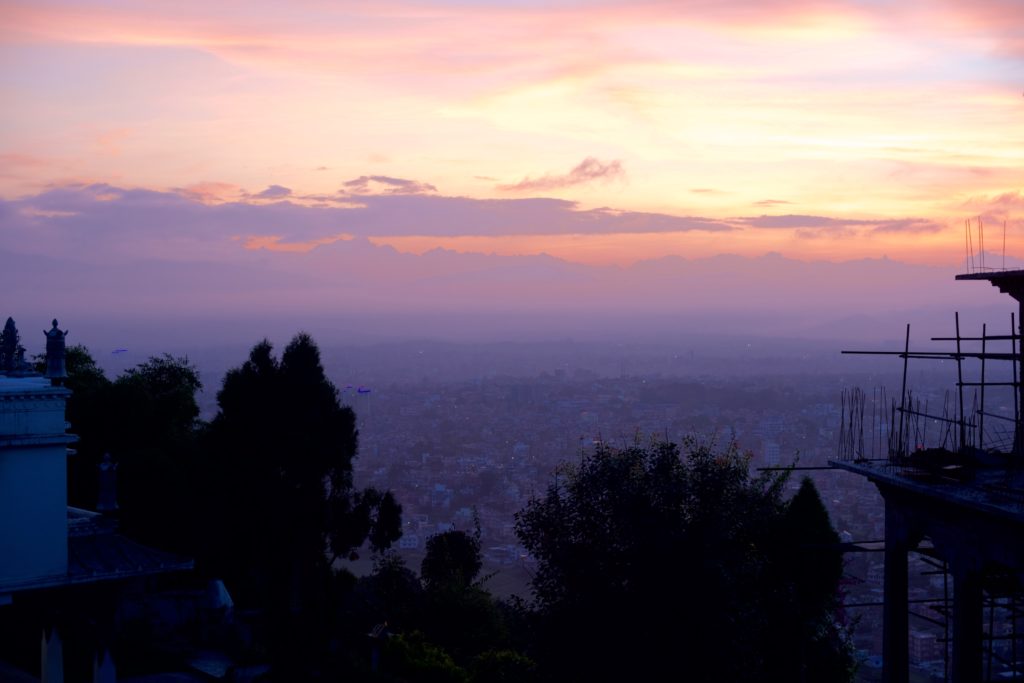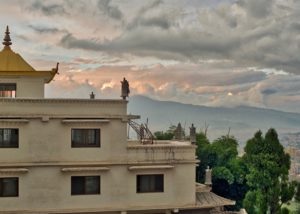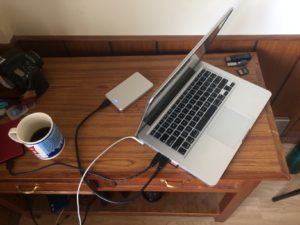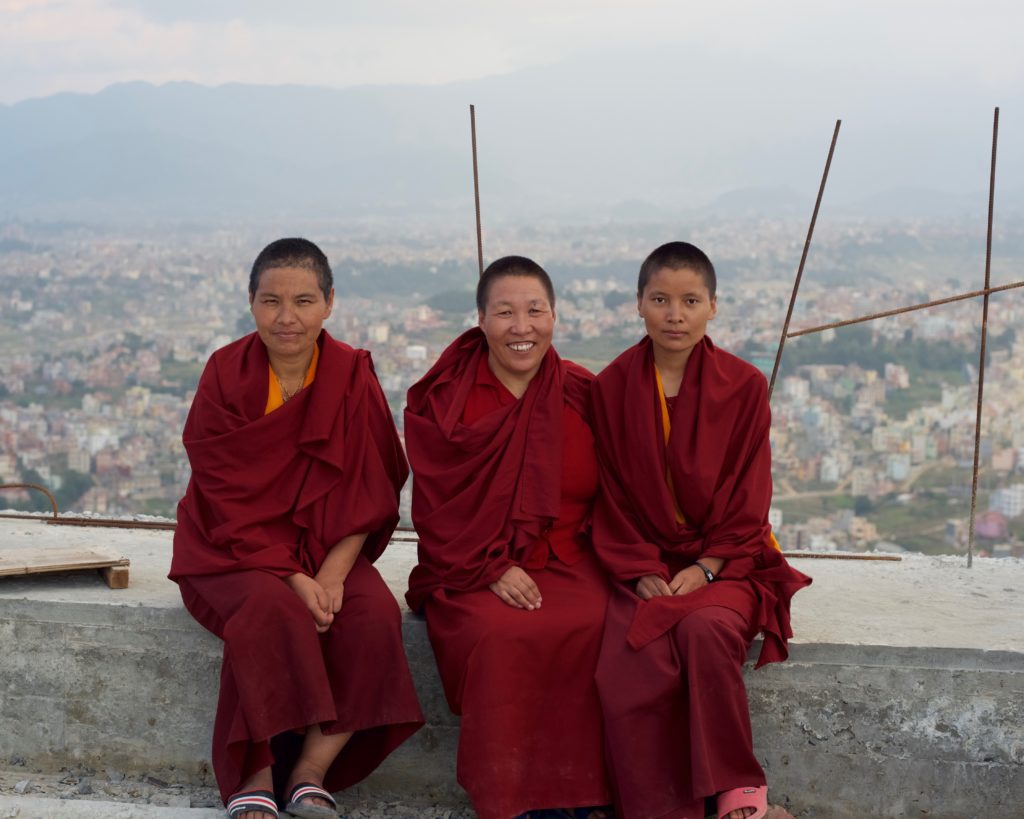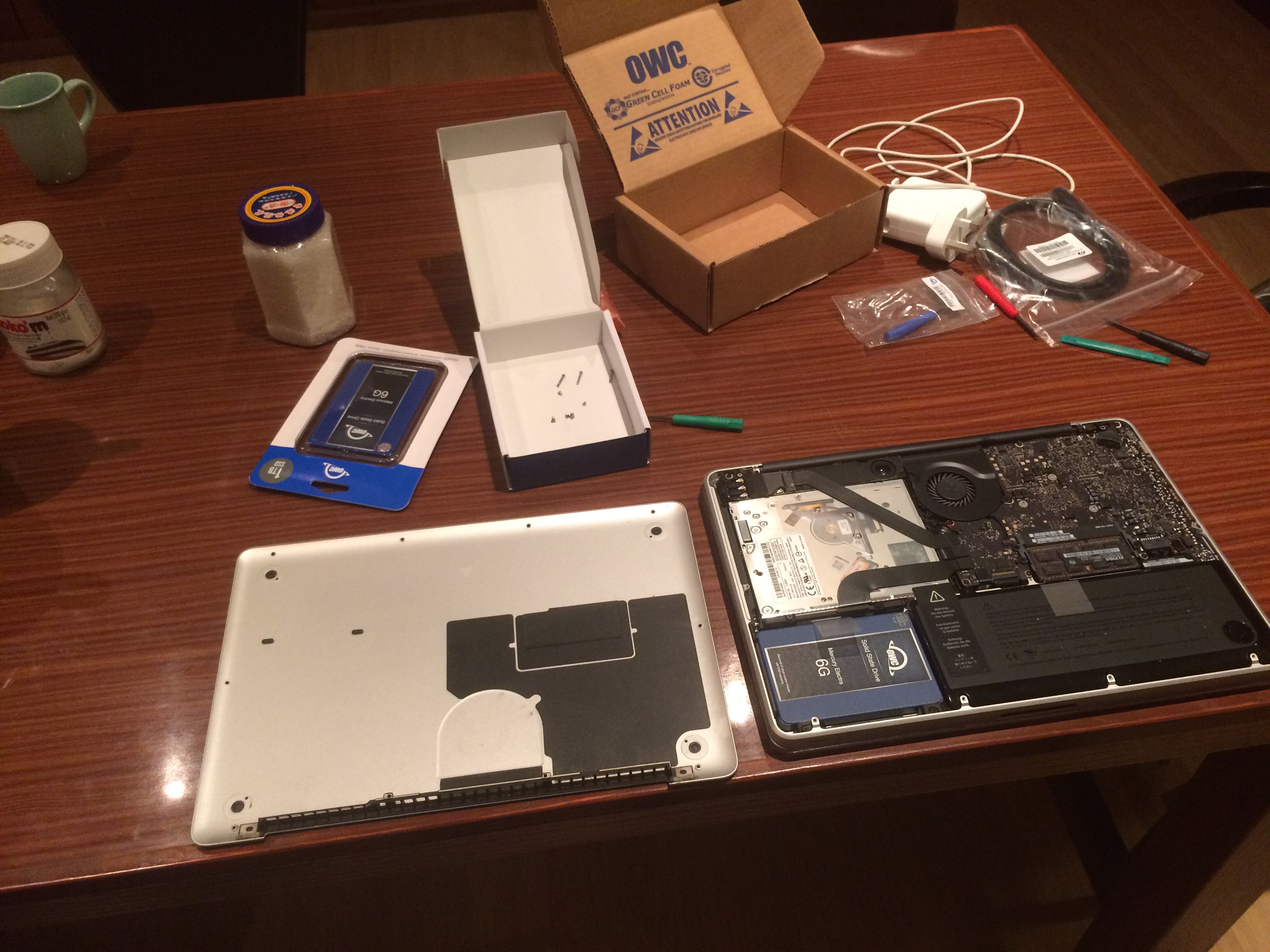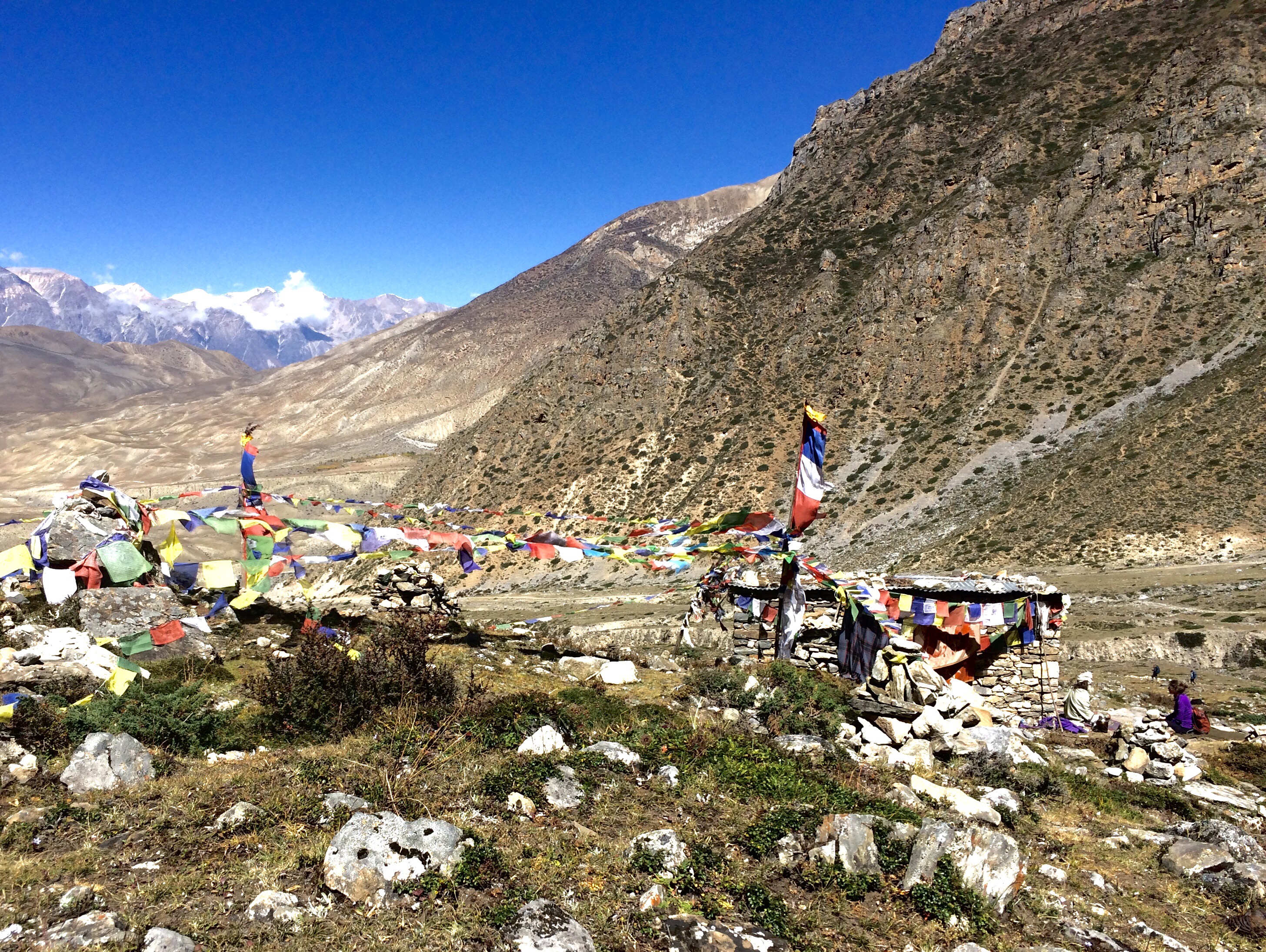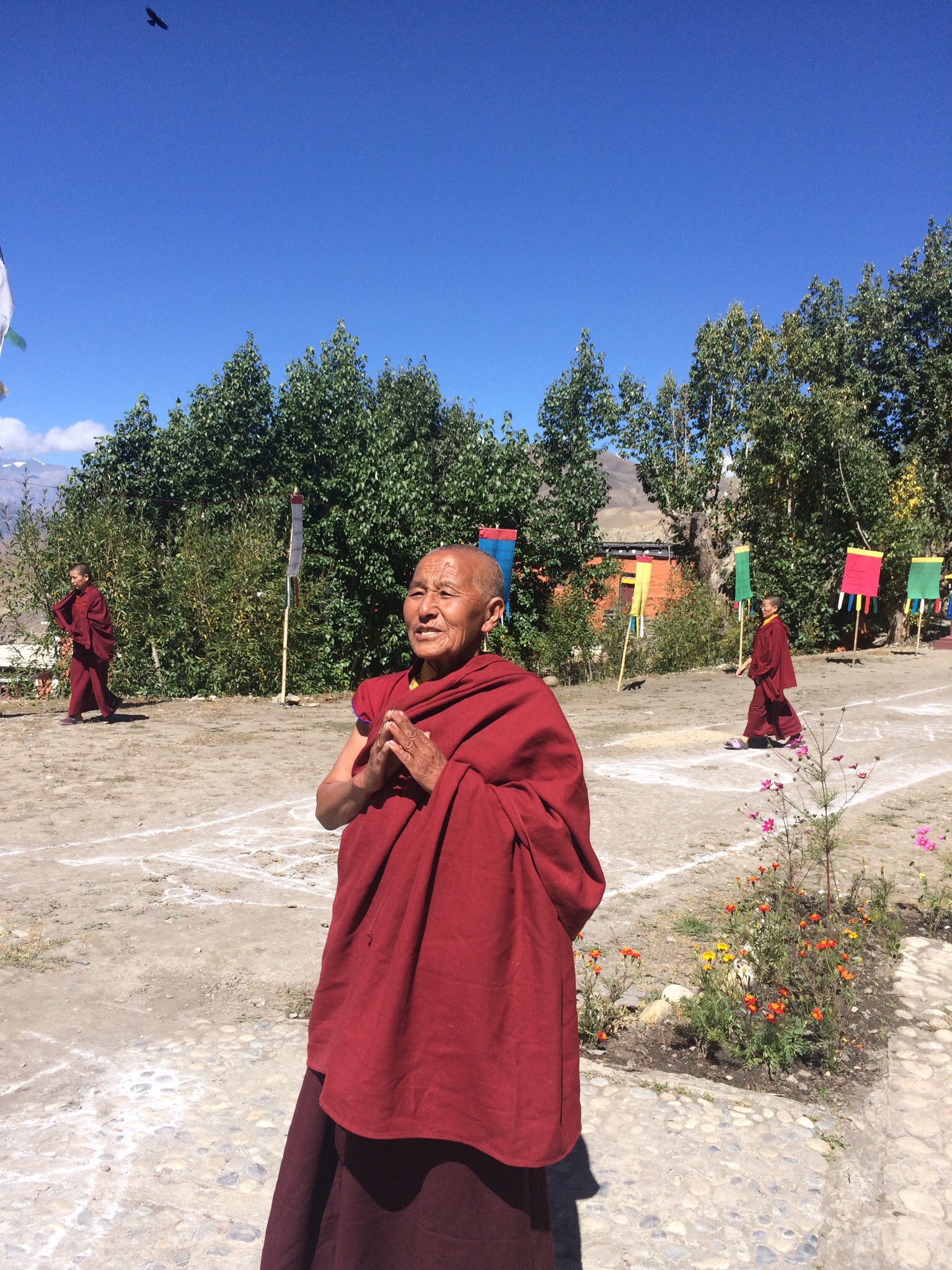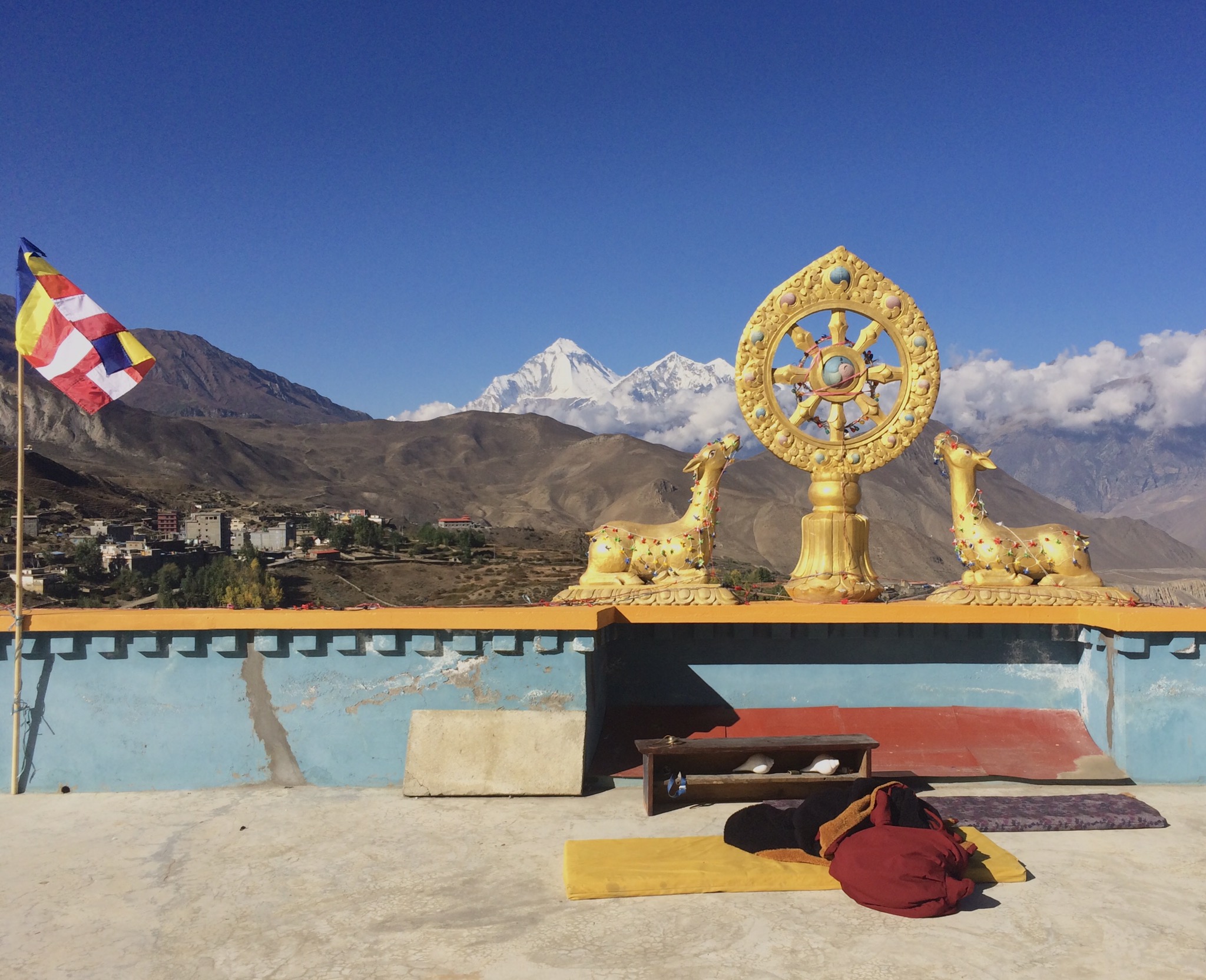Many of the stories I have posted describe the difficulties and challenges of living here in Nepal. These aren’t fabrications by any means but they don’t tell the whole story of this place or the people. I share them because they are so out of the ordinary of my experience at home. Nepal (and our home here at TGL) is by no means run “by the book” through planning, schedules or rationale. You could call it “bottom up” rather than “top down” organization.
Challenges aside, I want to convey the caring and the respect that has been extended to Joni and I during our visit. Many people have taken care of us and provided assistance and material support along the way. You might say this is a credit to “bottom up”, spontaneous compassion. Here are a few examples:
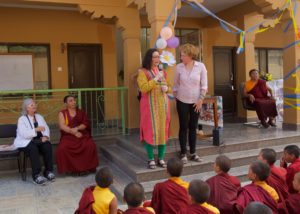
Fionnuala Shenpen is the Director of Tsoknyi Gechak School. She “hired” us for the job, manages the operations of the school and oversees instruction for the young Anis. Since we’ve been here she has done everything that she can to provide us with a comfortable room, food, special treats, directions, water, warm blankets and showers (at her house), plus special events that make us feel at home. The list is goes on and on. While she also expects us to be self-reliant (a requirement of the job) she cares for us like a parent would her children. Before we came to Nepal she kept us up-to-date with what was ahead in the schedule, how to reach her and what to bring. She has done everything she can to help us settle into our teaching routine. On top of all this she has help set our teaching schedule and discusses methods that can be beneficial to the children and respectful of the teachers.
I’ve really enjoyed getting to know Fionnuala while sipping tea at her house or hanging out with her and her mates in Kathmandu. She is an Irish gem and dynamo of energy. Her passion never wanes for the Anis, their education and their welfare.
Anis of Tsoknyi Gechak Ling – The Anis span the age range from 4 years to the 60 something (I’m guessing here). As such they have many different roles and responsibilities. The adult Shedra and Trasang nuns share the “Shedra” building with us. Each of us inhabit a different floor of the building and follow different routines, so we cross paths during different activities.
Both the Trasang and Shedra nuns take turns sweeping and mopping the all the floors of the Shedra building at 6:30am. The Trasang nuns bring us food and other accoutrements for living. The Shedra nuns spend most of their time in study and can be found all over the building studying, memorizing Sutras and chanting into the night. They are in serious preparations to be practitioners and teachers of the Dharma, wherever they may go. We have just begun having Sunday night tea and English Language meetings with them and have shared a few celebration events with them. Our lessons will have to take a back seat as they are prepare for exams that will commence this month. Despite or perhaps because of their serious study, they always greet us with a warm smile. They are eager to know us and learn our language despite their busy schedule.
Most of the nuns are very shy (as are we) so it has taken some time to break the ice and have eye-eye interactions. Add to this the challenge of recognizing their unique faces. Only slowly have I been able to recognize differences and build relationships so that I can address them with true recognition of past encounters. Living in the halo of all the senior Anis is a blessing and helps me through every day.
Regardless of barriers of language and social convention, I always feel respected and watched over by the Anis. From the little Anis at school to the most senior, we are valued. I seldom sit on the floor without being offered a cushion (their cushion) to sit on. The children greet us with smiles and cheerie voice, “How are you sir?”. Recently when I returned to school from a brief illness, they crowded around me to ask how I was feeling. No matter what age, the Anis oooh and aaah over photos of our grandchildren. While the children are not in a position of caring for our physical needs, it is evident that they do care about us.
As I reflect the care and concern shown us, I realize that this behavior is endemic to this place; grounded in the teachings of the Buddha, cooked by the demands of living in a small space of very familiar faces. They eat, work, study, sleep, pray, play and socialize almost exclusively within these walls. There are certainly opportunities for the older nuns to interact with the larger community but by and large they are self contained and dependent on one another. This clearly puts them into a natural awareness of working together.
The last time I experienced this level of cooperation was almost 40 years ago when I worked at Passport for Adventure; taking children into the backcountry. Weathering snowstorms, rain, heat, illness, hunger and physical stress together, in a small group, is a sure fire incentive to cooperation. Greater suffering or death are the alternative. Our program was intentionally designed to foster interdependence and the lessons that naturally flow from it. It was the most impactful therapeutic experience I’ve ever encountered.
While there are countless examples of cooperation and support within our American culture, we are all too aware of the rifts and polarization that exists on the macro level of our society. Without belaboring the point, we are more likely to cooperate within small groups or communities AGAINST other groups within our society, except when some common enemy from outside our borders threatens us. Perhaps this is Democracy at work. While this diversity is the backbone of our society, I hope that we can keep our common goals foremost in our hearts and minds in the knowledge that we are in the same, shrinking, boat. We need to care for the vulnerable and lift up the potential of all. We don’t need outside enemies to make this evident to us.
On a lighter note, please enjoy these photos of our field trip to the zoo. Going outside the gates is a rare opportunity for the school Anis as I said. We had a great time!

